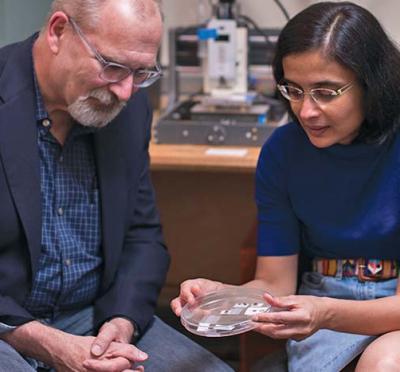
John Wager
4091 Kelley Engineering Center
Corvallis, OR 97331
United States
John F. Wager received the B.S. degree in engineering physics from Oregon State University in 1977 and the M.S. and Ph.D. degrees in electrical engineering from Colorado State University in 1978 and 1981, respectively.
From 1982-1984 he worked at Hughes Research Laboratories where he was involved in the development of compound semiconductor devices for high-speed and optoelectronic applications. He joined the Department of Electrical and Computer Engineering at Oregon State University in 1984, and is currently a professor in the School of EECS.
Wager received the Loyd Carter Award for outstanding and inspirational teaching in the OSU College of Engineering in 1989, the OSU College of Engineering Alumni Professor Award for outstanding scholarly contributions to the college and to the university in 1996, the OSU College of Engineering Research Award for outstanding and sustained research leadership in 2000, and the OSU Sigma Xi Researcher of the Year in 2006. He also received the Society for Information Display (SID) Special Recognition Award “for his pioneering contributions to the development of oxide TFTs” in 2012.
His specialization and research focus is in the area of solid-state materials and devices. Recent research thrusts include transparent electronics, printed electronics, and photovoltaics.
Wager is an IEEE Fellow and a Society for Information Display Fellow.



